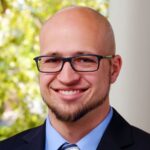Home › Resources
Access the KnowledgeWorks library of resources, which includes thought leadership, publications, stories from our partners in the field and more.
Sign up for our weekly newsletter.
Rethinking transcripts to reflect student mastery and real-world skills

Laura Jeanne Penrod explains why she centers the Triple A Philosophy and how educators can become voices for change.
KnowledgeWorks’ public comments that both support and challenge elements of the U.S. Department of Education’s approach to CBE
Be bold. Be creative. Be different. Envision your learning community’s future and the ways to get there.
A bold new vision for the future of education reimagines what’s possible in education when learning systems and structures center…

An introduction to a personalized, competency-based learning transformation journey
Five strategies to go from teacher- to learner-centered
Learn about state policies that support competency-based learning in an interactive map developed in partnership with the Aurora Institute.
Students already have agency—our systems often place artificial caps on it.

Student agency helps students become confident learners who see themselves as capable of growth and change
Immersive futures experiences help participants explore possible futures of learning.
Eight conditions to support the growth of personalized, competency-based learning through state policy

A future of learning where students of all races and ethnicities, incomes and identities pursue the kinds of learning experiences that enable them to uncover their passions and thrive in an evolving world.
Subscribe to receive email updates including expert insights, success stories and resources.